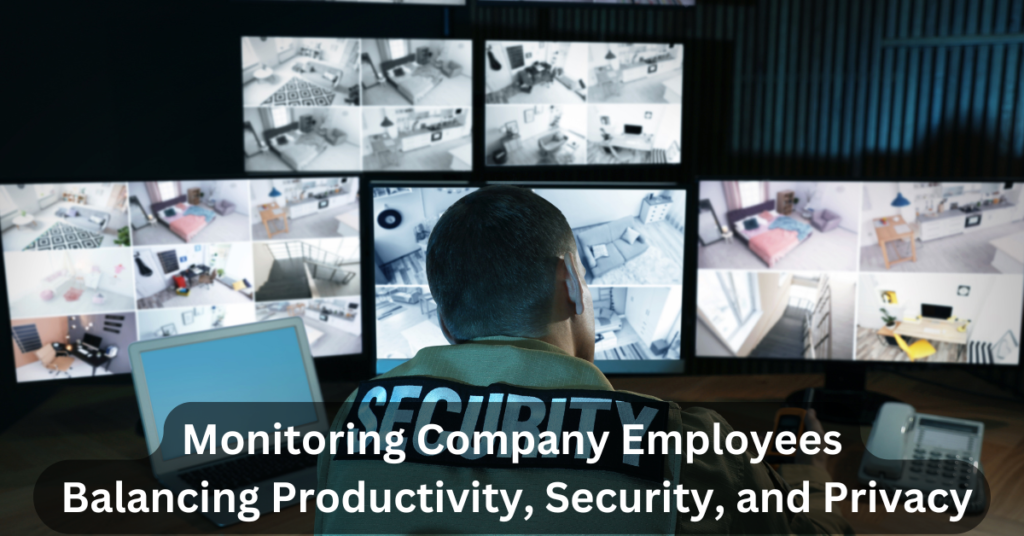Companies increasingly rely on employee monitoring technologies to oversee activities, protect business assets, and enhance productivity. Monitoring employees can include tracking computer usage, internet activity, emails, location (for mobile or remote workers), and even video surveillance. While such monitoring tools offer valuable insights and risk mitigation, they also raise important considerations about privacy, trust, and the ethical limits of surveillance.
The Role and Benefits of Employee Monitoring
Employee monitoring software and systems serve multiple purposes in modern organizations:
- Enhancing Productivity: Employers gain insight into how employees spend their working hours, enabling identification of time inefficiencies, distractions, or uneven workloads. Monitoring can help managers optimize task distribution and ensure compliance with working hours.
- Protecting Company Assets and Security: Monitoring helps prevent insider threats, unauthorized access to sensitive data, and security breaches. It enables organizations to detect high-risk behaviors such as visiting inappropriate or risky websites, unauthorized file transfers, or manipulation of business-critical systems.
- Ensuring Policy Compliance: Employers use monitoring tools to ensure adherence to company policies, regulatory requirements, and legal standards. This includes use of approved software, confidentiality agreements, and workplace conduct policies.
- Supporting Remote and Flexible Work: Especially with the rise of remote work, monitoring tools help maintain visibility into employee activities irrespective of location, facilitating collaboration and accountability.
- Data-Driven Management: Analytics from monitoring systems provide managers with objective performance data, helping to make informed decisions about training, resource allocation, and process improvements.
Read about: Android Hacking: Everything You Need to Know
Best Practices for Monitoring Employees Responsibly
To maximize the benefits of employee monitoring while minimizing negative impacts, organizations should adopt a balanced, ethical approach:
- Transparency: Clearly communicate the scope, purpose, and methods of monitoring to all employees. Policies should be accessible and understandable.
- Proportionality and Purpose Limitation: Collect only data necessary to achieve legitimate business goals. Avoid monitoring personal or non-work-related activities.
- Consent and Notification: Where legally required, obtain employee consent and regularly remind employees of monitoring policies.
- Focus on Aggregate and Anonymized Data: Use monitoring data primarily for overall performance improvement and security rather than singling out individuals unnecessarily.
- Respect for Privacy: Allow reasonable breaks and private time during work hours. Avoid intrusive surveillance such as continuous webcam monitoring unless justified.
- Legal Compliance: Ensure monitoring practices comply with relevant labor laws, data protection regulations (like GDPR), and industry standards.
- Employee Engagement: Involve employees in shaping monitoring policies and use feedback to improve practices and trust.
- Regular Review: Monitor the effectiveness and impact of surveillance measures and adjust as needed to protect employee well-being and company interests.
How Spying Apps Help in Employee Monitoring
Spying or monitoring apps provide companies with a range of valuable features that enhance security, productivity, and operational efficiency in the workplace:
- Boosting Productivity: Monitoring software helps identify time-wasting activities and distractions, encouraging employees to stay focused. Studies show productivity can increase significantly when monitoring is in place, as employees are more aware that their work activities are being observed.
- Improving Time and Resource Management: Employers can analyze workflows, identify bottlenecks, and optimize resource allocation. This leads to better project management and efficient use of working hours.
- Increasing Accountability: By tracking task completion, working hours, and software or website usage, monitoring apps foster a culture of responsibility and ensure employees meet deadlines and performance expectations.
- Enhancing Data Security: Monitoring tools help detect unauthorized access, potential data breaches, and suspicious activities. This is crucial for protecting sensitive business information and complying with regulatory requirements in sectors like finance and healthcare.
- Supporting Remote and Hybrid Work: With employees working from diverse locations, spying apps provide managers with real-time insights into employee activities, helping maintain accountability and productivity even outside the traditional office environment.
- Enabling Informed Decision-Making: Monitoring data offers objective performance metrics that assist in fair performance evaluations, identify training needs, and guide managerial decisions to improve workforce effectiveness.
- Improving Employee Engagement and Morale: When implemented transparently, monitoring fosters a clear understanding of expectations and can highlight areas where employees excel or need support, which supports engagement and retention.
- Reducing Operational Risks: Monitoring aids in compliance with labor laws and organizational policies, helping to mitigate risks of harassment, discrimination, or policy violations
Employee monitoring is a powerful tool that, when implemented thoughtfully, can enhance productivity, improve security, and support compliance in the workplace. However, it involves navigating complex ethical, legal, and human factors. Organizations must strike a careful balance deploying monitoring technologies transparently, respectfully, and proportionally to avoid damaging employee trust and morale.
By adopting best practices that emphasize openness, fairness, and respect for privacy, companies can create an environment where monitoring supports both business objectives and a positive employee experience. Ultimately, responsible employee monitoring supports a culture of accountability, safety, and mutual respect critical to organizational success in the digital age.


